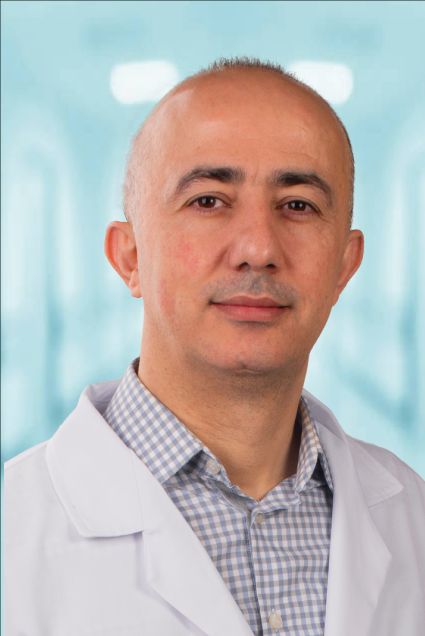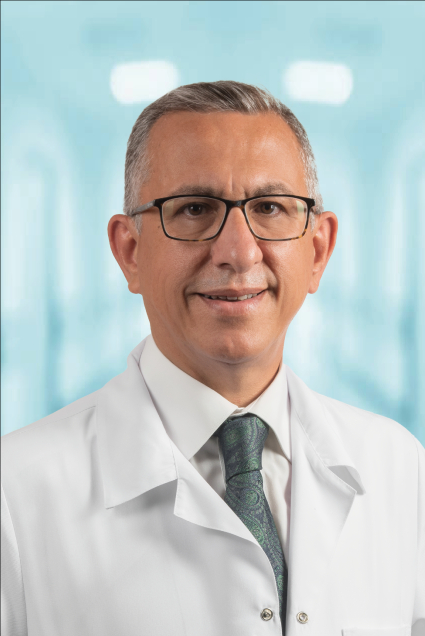Health Guide
BREAST CANCER

BREAST CANCER
Release Date: 11 11 2019
Writer: PROF. M.D. Bekir YAŞAR
It is the most common type of cancer in women. Throughout her life 1 in 8 women gets breast cancer.. The most important risk factor is undoubtedly being a woman, but breast cancer can also be seen in men, and this rate is less than 1% of women.
Breast cancer is more prevalent in developed countries. Japan is an exception in this situation.This is attributed to the excess consumption of omega 3-containing fish in Japanese cuisine. So, after a few generations, Japanese settlers in the USA reach the same rate as other US citizens. The most blamed in this regard are the excessive consumption of fatty-fast food and obesity. Especially, breast cancer is more common in postmenopausal obese women than others.
Although breast cancer is generally seen more frequently after the age of 40-50 and advanced age is an important risk factor, unfortunately, we see it more than expected at a young age in our country.
Today, alcohol consumption is also considered among the important risk factors.
Hormones are among the classic risk factors.Having given birth to their first child at an advanced age, more importantly, to have never given birth, menopause at a young age,Starting birth control pills at an early age and using them for a long time, Reasons such as using estrogen + progesterone hormones together for a long time to alleviate the menopausal complaints of women entering menopause are among these factors. Having cancer in one breast poses a risk for cancer in the other breast (simultaneously or at different times).
Genetic factors are also among the causes of breast cancer. This is like 10-15%. In the meantime, genetic studies show that those with positive BRCA I (breast cancer I) BRCA II (breast cancer II) genes are very likely to have breast cancer.
In patients with breast cancer with genetic inheritance, other organ cancers can be seen more at the same time or in another time period. For example ; such as breast cancer - ovarian cancer, breast cancer - colon cancer, breast cancer - brain tumor.
These types of cancers, which we call hereditary, occur at a younger age and are more likely to be bilateral (at the same time or at different times).
Physical examination and radiological evaluation are essential in diagnosis. However, the definitive diagnosis is made by pathological examination of the part taken from the breast.
In physical examination, we can collect the findings under two headings, early and late periods.
Although breast tumor can be seen all over the breast, the most common place is the upper outer quadrant.
When we look at it, a slight dimpling in the breast skin, a kind of shrinkage, nipple intrusion, bloody discharge from the nipple, and an eczema-like appearance around the nipple are among the important early period symptoms. As the tissues behind the nipple in the elderly are atrophied, it may escape into the nipple.But when it is pulled by hand, it comes out. This is a normal physiological condition.However, in cancer, the nipple does not come out.
Palpation of a mass on palpation is a very important finding, but every palpable mass is not cancer. Especially in young people, benign tumors that we call fibroadenoma, cysts in middle and older ages are confused with cancer by patients.If there is a mass in the armpit and a mass in the breast, it is very important in terms of cancer risk.
In more advanced cancers, an orange peel appearance in the breast skin, change in breast size (shape or size), ulceration (wound) in the breast, limited or widespread edema in the breast skin, mastitis-like appearance involving the whole breast, a large mass in the breast, glands in the armpit. If it is larger than 2.5 cm or is tightly adhered to deep tissues, edema may be seen in the arm.
After the necessary physical examination is performed in the patients who apply to the physician, radiological examination should be performed whether or not any finding is encountered (tumors smaller than 1-1.5 cm may not be palpable depending on the structure of the breast).
Since the milk glands are very dense in young people, the first thing to do should be an ultrasound radiological examination.Mammography becomes more important in patients aged 40 and over.
A suspicious finding was found in both physical examination and radiological examination, then biopsy is necessary for definitive diagnosis. Biopsy is done as a needle biopsy or surgical biopsy. If the pathologist says there is cancer, this diagnosis is definite and treatment is started.
Staging is essential for treatment. Breast cancer is examined in 4 stages.
Stage I-II is called early stage. Surgery forms the basis of treatment in the early stage. Chemotherapy, hormonotherapy, immunotherapy and radiotherapy can be added to this according to the pathological results.
Two methods are currently valid in the surgical treatment of early stage breast cancer.
A – Breast conserving surgery. If there are some special conditions, breast conserving surgery is performed.In this treatment, cancer tissue is removed with at least 2-3 mm of healthy tissue and armpit lymph nodes are cleaned. In 30% of the patients whose underarm glands are completely cleaned, more or less edema may be in the arm. Therefore, lymph node sampling is performed by radioisotope and / or staining method in patients whose axillary gland is not detected during physical examination. If there is no tumor in the lymph node we call the guard (as a result of emergency pathological examination), the operation is completed at that stage. If there is a tumor in the gland, all of the lymph nodes should be cleaned.
B –removing the entire breast and cleaning the armpit glands(MRM).
Stage III is called locally advanced breast cancer.At this stage, 3-4 cycles of chemotherapy, then surgery and radiotherapy are applied depending on the situation.Chemotherapy - hormonotherapy - immunotherapy is continued.
Stage IV breast cancer is advanced. Distant metastases can also be found in these patients.Surgery and radiotherapy are applied only to improve the quality of life of the patient when necessary.The basis of treatment in these advanced stage tumors is chemotherapy - hormone therapy - immunotherapy.
If breast cancer is caught at an early stage, the results are very good. The vast majority of patients do not cause death.
Post-treatment follow-up is very important. The organs in which breast cancer metastasizes most are the spine bones, bones and lungs.Therefore, these organs are examined first, together with the breast tissue remaining under follow-up.
Early diagnosis is very important in the treatment of breast cancer.Therefore, all women should examine themselves by hand in front of a mirror and lying down, preferably in the week after menstruation, starting from the age of 20. Provided that those with a positive family history start at an earlier age, women aged 30 and over should definitely go to a doctor's examination and necessary tests should be done. Examinations must be done every 3 months, every 6 months or once a year, depending on the situation detected in the first examination.At the age of forty, you must have a mammogram.After that, it is repeated every 1-2-3 years, depending on the situation. It is recommended to repeat this every year from the age of 50 until the age of 60.
Yours Sincerely
Prof. Dr. Bekir Yaşar




